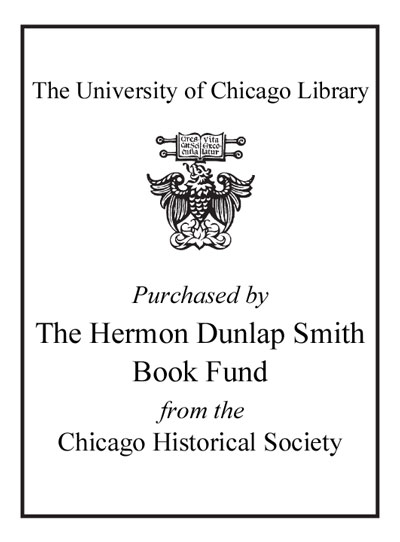The silver women : how Black women's labor made the Panama Canal /
Saved in:
| Author / Creator: | Flores-Villalobos, Joan, author. |
|---|---|
| Imprint: | Philadelphia : University of Pennsylvania Press, [2023] |
| Description: | 287 pages : maps ; 24 cm. |
| Language: | English |
| Series: | Politics and culture in modern America Politics and culture in modern America. |
| Subject: | |
| Format: | Print Book |
| URL for this record: | http://pi.lib.uchicago.edu/1001/cat/bib/12922010 |
MARC
| LEADER | 00000cam a2200000 i 4500 | ||
|---|---|---|---|
| 001 | 12922010 | ||
| 008 | 220511s2023 paub b 001 0 eng | ||
| 005 | 20230410204956.9 | ||
| 010 | |a 2022017511 | ||
| 035 | 9 | |a (GOBI)99993197454 | |
| 040 | |a PU/DLC |b eng |e rda |c DLC |d OCLCF |d BDX |d UKMGB |d GZN |d YDX | ||
| 019 | |a 1304341575 |a 1304400467 |a 1304462304 | ||
| 020 | |a 9781512823639 |q hardcover | ||
| 020 | |a 1512823635 |q hardcover | ||
| 020 | |z 9781512823646 |q electronic book | ||
| 035 | |a (OCoLC)1304817568 |z (OCoLC)1304341575 |z (OCoLC)1304400467 |z (OCoLC)1304462304 | ||
| 042 | |a pcc | ||
| 043 | |a ncpn--- |a nccz--- | ||
| 050 | 0 | 0 | |a F1577.B55 |b F56 2023 |
| 082 | 0 | 0 | |a 972.87/500496 |2 23/eng/20220525 |
| 100 | 1 | |a Flores-Villalobos, Joan, |e author. | |
| 245 | 1 | 4 | |a The silver women : |b how Black women's labor made the Panama Canal / |c Joan Flores-Villalobos. |
| 264 | 1 | |a Philadelphia : |b University of Pennsylvania Press, |c [2023] | |
| 300 | |a 287 pages : |b maps ; |c 24 cm. | ||
| 336 | |a text |b txt |2 rdacontent | ||
| 337 | |a unmediated |b n |2 rdamedia | ||
| 338 | |a volume |b nc |2 rdacarrier | ||
| 490 | 1 | |a Politics and culture in modern America | |
| 504 | |a Includes bibliographical references (pages 231-277) and index. | ||
| 520 | |a "The Panama Canal was realized as much through the exploitation of a racialized class of workers as it was by American ingenuity. What is less visible, and less understood, is the project's dependence on the domestic and care labor of Black migrant women, who were paid in silver rather than the gold that white workers received. The Silver Women shifts the focus of this monumental endeavor to the West Indian women who travelled to Panama, inviting readers to place women's intimate lives, choices, grief, and ambition at the center of the economic and geopolitical transformation created by the construction of the Panama Canal and U.S. imperial expansion. The Silver Women argues that Black West Indian women made the canal construction possible by providing the indispensable everyday labor of social reproduction. West Indian women built a provisioning economy that fed, housed, and cared for the segregated Black West Indian labor force, in effect subsidizing the construction effort and its racial calculus. But while also subject to racial discrimination and segregation, West Indian women mostly worked outside the umbrella of U.S. canal authorities. They did not hold contracts and had little access to official services and wages. From this position, they found ways to skirt, and at times subvert, the legal, moral, and economic parameters imperial authorities sought to impose on the racialized migrant workforce. West Indian women developed important strategies of claims-making, kinship, community building, and market adaptation that helped them navigate the contradictions and violence of U.S. empire. In the meantime, these strategies of social reproduction nurtured further West Indian migrations, linking Panama to places like Harlem and Santiago de Cuba. The book is thus a history of Black West Indian women's labor of social reproduction as integral to U.S. imperial infrastructure, the global Caribbean diaspora, and women's own survival"-- |c Provided by publisher. | ||
| 650 | 0 | |a Foreign workers, West Indian |z Panama |x History. | |
| 650 | 0 | |a Women foreign workers |z Panama |x History. | |
| 650 | 0 | |a Women, Black |z Panama |x History. | |
| 650 | 0 | |a West Indians |z Panama |x History. | |
| 651 | 0 | |a Panama Canal (Panama) |x History. | |
| 651 | 0 | |a Canal Zone |x History. | |
| 650 | 7 | |a Foreign workers, West Indian. |2 fast |0 (OCoLC)fst01729220 | |
| 650 | 7 | |a West Indians. |2 fast |0 (OCoLC)fst01173950 | |
| 650 | 7 | |a Women, Black. |2 fast |0 (OCoLC)fst01178916 | |
| 650 | 7 | |a Women foreign workers. |2 fast |0 (OCoLC)fst01734121 | |
| 651 | 7 | |a Canal Zone. |2 fast |0 (OCoLC)fst01207252 | |
| 651 | 7 | |a Panama. |2 fast |0 (OCoLC)fst01205585 | |
| 651 | 7 | |a Panama |z Panama Canal. |2 fast |0 (OCoLC)fst01243650 | |
| 655 | 7 | |a History. |2 fast |0 (OCoLC)fst01411628 | |
| 830 | 0 | |a Politics and culture in modern America. | |
| 929 | |a cat | ||
| 999 | f | f | |s edfcd367-e18e-412a-b49a-d395a0674667 |i cb0c0b17-5b0d-4850-b07a-7def096c8258 |
| 928 | |t Library of Congress classification |a F1577.B55F56 2023 |l JRL |c JRL-Gen |i 13059783 | ||
| 927 | |t Library of Congress classification |a F1577.B55F56 2023 |l JRL |c JRL-Gen |e HESM |b 118288053 |i 10468914 | ||

